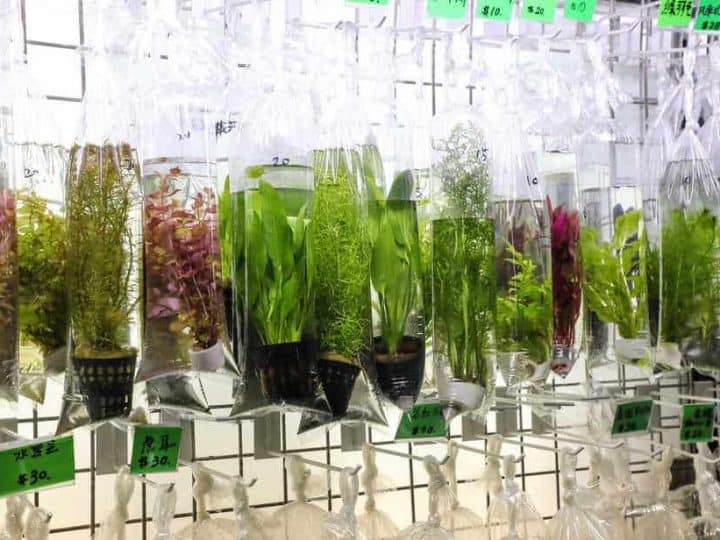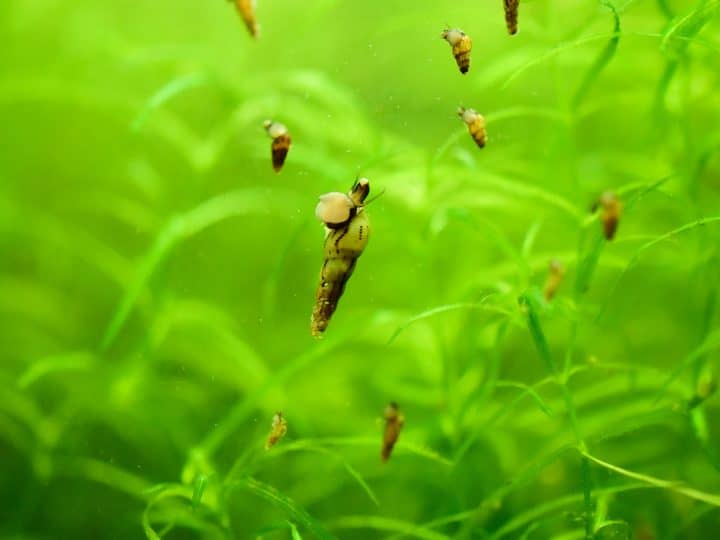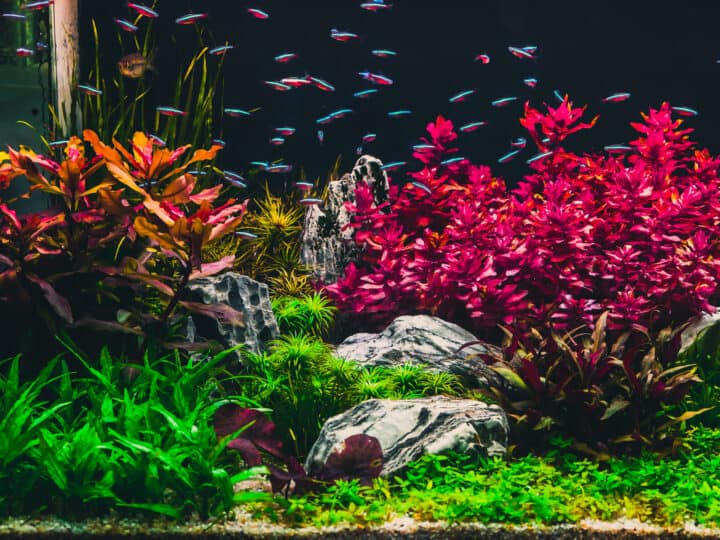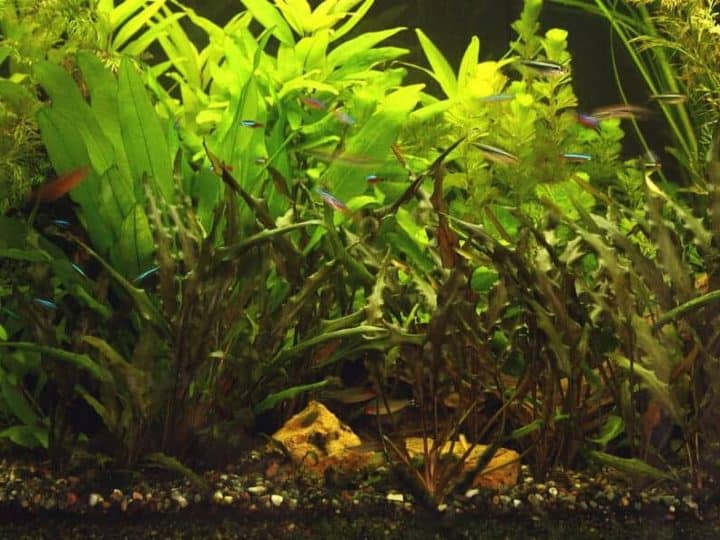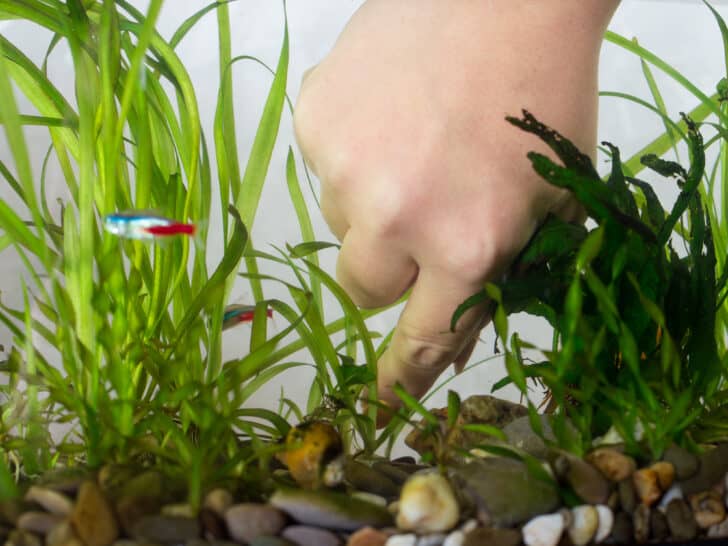I remember buying my first plants for my new aquarium, where some plants were in these little plastic pots. It seemed convenient to just put them in the aquarium like that, but with normal garden plants everyone always takes them out of their plastic pot. I did my research and this is the answer I found.
Quick Answer
Yes, always take your aquarium plants out of their pot. This is primarily to remove the rock wool in which the roots are grown. If you have goldfish that like to dig up plants, you can re-pot the plant into a new pot.
Now that you know you should take the plants out of the plastic pots, it’s important to know why. I will also briefly cover the other things you should do when preparing an aquarium plant for your aquarium.
Why take the plants out of their pots
Most plants that are sold in stores come in these little plastic pots we are talking about. It’s not a problem if these pots stay in your aquarium. The problem arises when you do not remove the rock wool from the roots.
Most plants grow on massive plant farms with only their roots in the water. This means that the leaves are grown out of the water, also called emersed. The roots grow in rock wool, which you should not put in your aquarium. It seems to get everywhere, and it can end up in the gills of your fish.
This can hurt your fish and cause all kinds of nasty wounds.
How should you remove the rock wool? If you’re lucky, the roots are easy to take out without damaging them too much. In a bad case, it’s a pain to remove all the rock wool. Try and remove as many as you can with your fingers. If you do it under your tap with running water it seems to make it easier.
If you’ve removed as much as possible with your fingers, take an old toothbrush to really get in there and remove the rest. Do this process gently to avoid damaging the root system of your plant.
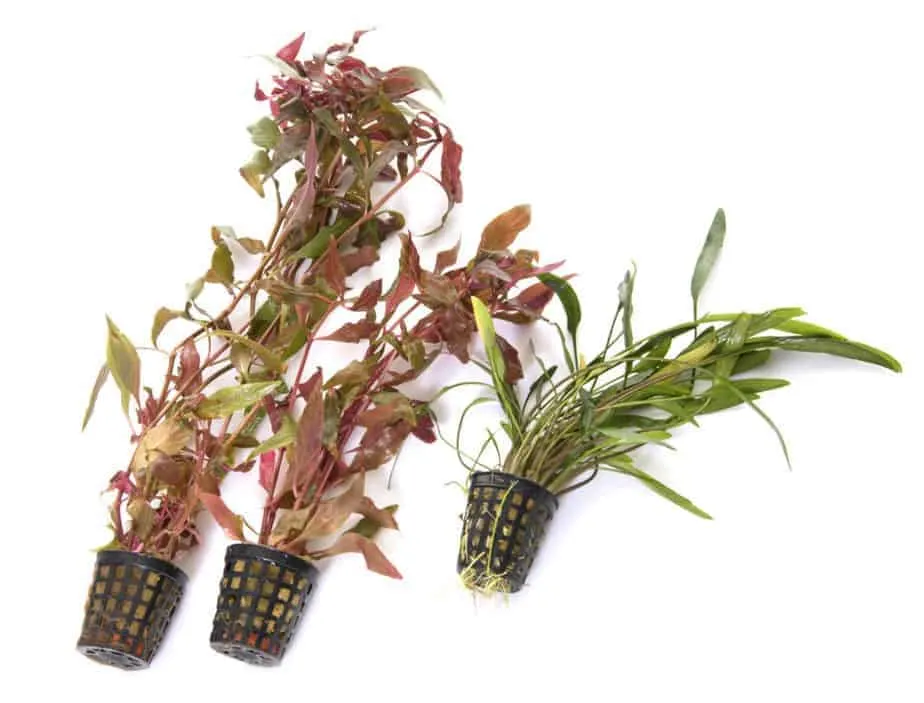
Aquarium plants in other pots
If you’re keeping goldfish you know how much they love to dig around in the substrate, pull of leaves and generally nibble on plants. Therefore many people keep their aquarium plants in the plastic pots with the rock wool. There are alternatives to this, that are pretty easy to do.
You want to go find a standard terracotta pot. It’s going to be a lot bigger than the tiny plastic pot the plant came it, which also gives the plant more space. Other things you are going to need are pea-sized gravel and soil (can be potting soil from the garden center).
In the pot, you first have to put a layer of pea gravel, than a layer of soil and finally a cap-layer of gravel.
Alternatives to the soil is fine gravel or aquarium sand with a root tab. Root tabs are small fertilizer capsules you can use to locally fertilize plants. I always recommend the root tabs from Seachem, check out the price here on Amazon.
When you plant your plant in the new pot, it will have access to all the nutrients it needs and your fish will no longer be able to pull it out because you’ve properly buried the roots into the soil layer.
How to keep aquarium plants from floating
When you’re trying to plant your plants in substrate it can happen that they get loose and start floating around your aquarium. If planting them more thoroughly does not work, more desperate measures can work.
You can try tying the plant to a piece of wood or a rock using fishing line, superglue or a cable tie. Using glue to fixate plant to a small pebble, which you then in turn bury, is an effective way of weighing your plants down.
However, if you can just use some rocks that you can stack at the base of the plant to keep it in place, I would definitely recommend that. Tying plants to items is risky because fish that love to crawl everywhere can find themselves tied down and stuck. It can cause some unwanted ugly wounds and potentially even kill your aquarium fish.
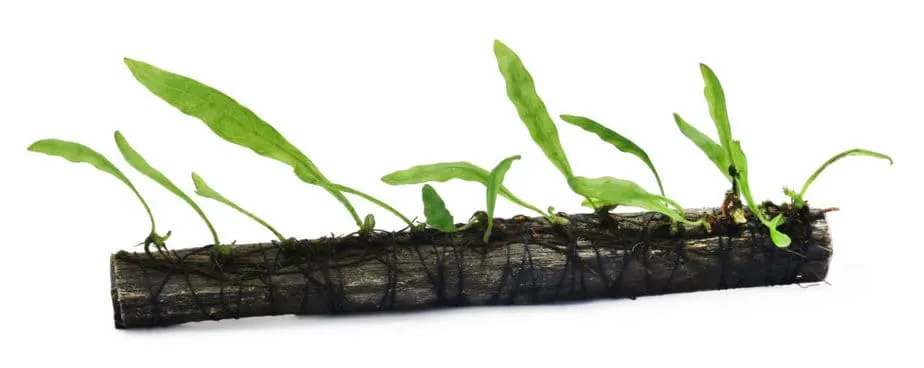
Preparing a plant for your aquarium
There are a couple of things you should not skip when you’re about to add some new plants to your tank. First of all, you should give all the plants a thorough rinse to remove any snails or snail eggs that could be hitchhiking in the plant.
It is actually very common for snails to enter your aquarium trough plants. There are so many people who have many snails crawling around in their tank without every having bought a single one of them. While snails aren’t bad, they can be an ugly sight.
If you want to be really thorough, a rinse in diluted bleach will not harm the plants and will definitely remove unwanted intruders.
My favorite fishtank products that make life easier
I am so happy you enjoy this post so far! You will also definitely like my product recommendations that will make your fishkeeping experience so much better. I’m 100% sure you’ll love them!
- Without a gravel vacuum, like one from Aqueon, cleaning the substrate of your tanks is near impossible. Whenever I want to remove some of the sunken detritus from the bottom of my acrylic tanks I’m happy I’ve got one of these.
- It’s no secret that I do not like nutritious aqua-soil. It makes a mess and only works for a given amount of time. Instead, I always use a liquid aquarium plant fertilizer. Everyone who keeps live plants needs it, it’s not that expensive and makes your plants grow better.
- I love keeping plants, but planting and reorganizing my aquarium was difficult until I got a set of these tools. It’s much easier to plant any kind of plant compared to using my thick fingers.
- Ever since I’m able to accurately test my water parameters, including the pH level, keeping fish became less stressful. Before I was always stressed that my water parameters were wrong, but with a kit such as the API Master kit, I can measure this. It really is essential to successful fishkeeping.
- The more you know about your aquarium, the better! Temperature is crucial for the health of your fish. A thermometer will also show you whether your heaters are still working correctly. It will give you more insight and more peace of mind. It’s an easy way to ensure that you’re providing your fish with the tropical temperatures they need.

